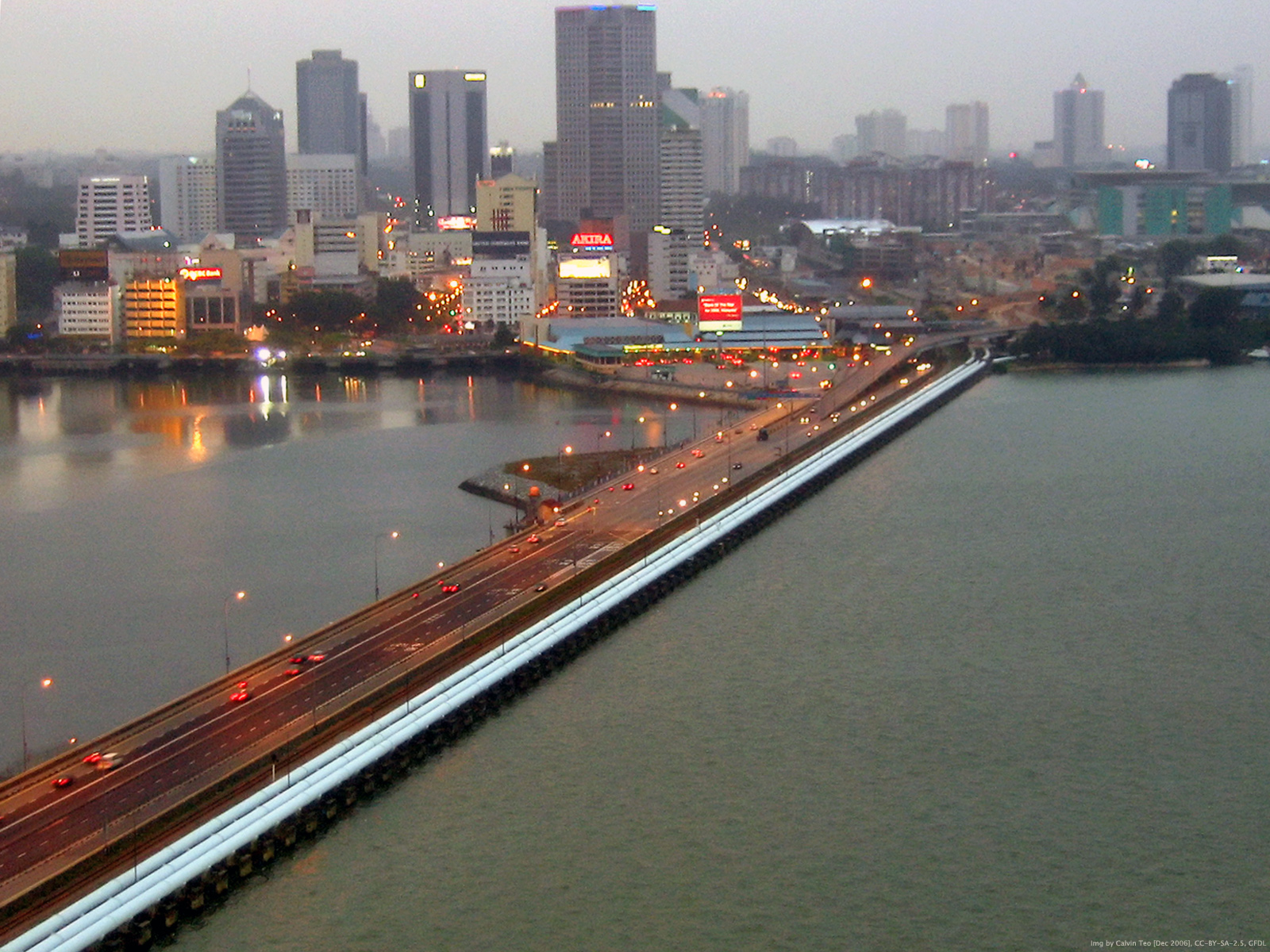Cleaning up Johor Straits good for S'pore too
 Punggol, which is located on the northeastern part of Singapore, will be given a new lease of life. Singapore's Prime Minister Lee Hsien Loong said during his National Day Rally speech on Aug 19 that the masterplan for the area dubbed 'Punggol 21-plus' is 'back on track'.
Punggol, which is located on the northeastern part of Singapore, will be given a new lease of life. Singapore's Prime Minister Lee Hsien Loong said during his National Day Rally speech on Aug 19 that the masterplan for the area dubbed 'Punggol 21-plus' is 'back on track'.
'Punggol 21-plus' will boast features like a freshwater lake - and a waterway running through the estate with homes and a town centre built on both banks, according to ST. The north-eastern coastal suburb will also get recreational facilities like water sports, gardens and parks with jogging tracks and eateries for al-fresco dining.
It all sounds great, but Punggol and the rest of the northern part of Singapore will never be as vibrant as the southern region of Singapore. The southern region, which has always been the commercial hub of Singapore, is rapidly being transformed into a more fun place.
The southern part of Singapore will have two world-class integrated resorts with casinos within the next three years or so. The government has awarded the Marina Bay site to Las Vegas Sands, which is building also building the world's biggest casino in Macau, and the Sentosa site to Genting International.
That's not all in the Marina Bay area. The new downtown is taking shape and there will be world-class gardens, a giant fresh-water reservoir, and a huge ferris wheel. There will be plenty of activities around the clean and pristine Marina Bay once all the plans are in place.
While the southern part of Singapore is attracting all the big dollars and attention, the northern part of Singapore will continue to be relatively subdued despite the latest plan to rejuvenate Punggol.
As Singapore is small with 704 square kilometres in area, every inch of Singapore, including the northern part, will have to be spruced up eventually. But it won't be easy to rejuvenate the northern coastline.
For a start, water off the northern part of Singapore, which is bounded by a strip of water known as Straits of Johor, is very dirty. The straits is a narrow waterway separating Singapore and its close neighbour Malaysia.
The straits is almost like a giant cesspool that has not been flushed for more than 80 years. Why? This is partly because the causeway, which was built on reclaimed land and cuts across the straits to link the two countries, has been blocking the free flow of water in the straits since it was completed by the British in 1924.
Singapore has done its part to reduce further pollution to the straits, spending $7 billion to build massive tunnels to move sewage to two new waste treatment plants in Changi and Tuas, instead of discharging waste into the straits.
Malaysia is also trying to clean up the straits, although not as successful.
In 1996, former Malaysian Prime Minister Mahathir Mohamad proposed an overhead bridge to replace the ageing causeway in a bid to free up the flow of water in the straits. It is part of a grander plan to turn the southern Malaysian state into a transportation hub. The project would have allowed small ships and barges to traverse the straits.
The bridge project has not taken off after ten years, complicated by internal Malaysian politics and disagreements with the Singapore government. Last year, current Malaysian government led by Abdullah Ahmad Badawi, called off the bridge project. Malaysia could not strike a deal with Singapore, which wanted to buy sand and use Johor airspace as part of the quid pro quo to jointly build a new bridge.
The decision to abort the project incensed Dr Mahathir, who is still on a warpath with his successor despite bouts of heart attacks. The Malaysian statesman had early said he would stop his bickering if the bridge is built. He had continued to criticise the bridge issue as reported in malaysia-today.
The bridge project is expected to remain on the backburner for some time, as the two governments have not been able to resolve all their differences since the two countries separated in 1965.
With or without a new bridge to replace the causeway, Malaysia and the Johor state government must step up efforts to clean up the five dirty rivers flowing into the Johor Straits.
But it will be more ideal if a new overhead bridge could be built to replace the over-utilised causeway and allow water in the stagnant straits to circulate more freely.
A cleaner straits will be good for the long-term development of the coastal areas of both Singapore and southern Malaysia, which will have a new development zone called Iskandar Development Region.
A cleaner Johor Straits could also help make northern Singapore, including Punggol, a more thriving hub one day.




3 comments:
I agreed with you on this matter to a certain extent, but a totally new bridge is costly. Why not consider to build 'flyover' on top of existing causeway and thereafter break the centre of the causeway to allow water flow through. But again, how about the existing water pipes and railway track? Maybe the railway service should just stop at JB and then convert the existing railway track into an LRT line. Well, this is just my idea. It definitely need to consider further in detail.
goliku, tt's one way to do it but i dont think it will be ideal. i wrote this earlier in http://sophiesworld-sophiesworld.blogspot.com/2006/12/jb-singapore-mrt.html
A more ideal solution is for Malaysia and Singapore to jointly agree on a new and wider bridge to replace the causeway, which retards the flow of water in the filthy Straits of Johor.
1. Singapore and Malaysia planners can then allocate space for the monorail project from JB to Singapore on the new bridge.
2. Planners on both sides of the causeway can also discuss the possibility of setting aside space on the new bridge for the bullet train service from Singapore to Kuala Lumpur.
3. Channelling the human traffic through the current custom and immigration facilities in JB and Singapore will be a neater solution, than possibly building new facilities just to cater to the monorail track.
Building a new bridge to replace the causeway will solve many problems in one fell swoop.
Malaysia and Singapore can make provision for wider roads and space for useful projects such as the monorail and bullet train service to cater to the massive cross-border flow of people. And an overhead bridge will also allow water to flow freely in the Straits of Johor after more than 80 years.
The old causeway was simply not designed to help the massive cross-border flow of people - Singaporeans and Malaysians.
Also, I don't quite buy the singapore government argument that it's too expensive. it will cost singapore about S$500 million to build something that will benefit more than 10,000 people who cross the causeway daily.
$500 million sounds like a lot of money but it costs less than a new condo project that will benefit 500 families or so. this is just a comparison. hope nobody takes the example literally.
pls read this earlier posting -- http://sophiesworld-sophiesworld.blogspot.com/2006/11/reposting-useful-causeway.html
cheers
off-white
hermes bag outlet
jordans
bape hoodie
golden goose on sale
nike dunks
goyard bags
supreme new york
jordan
kyrie 8
Post a Comment